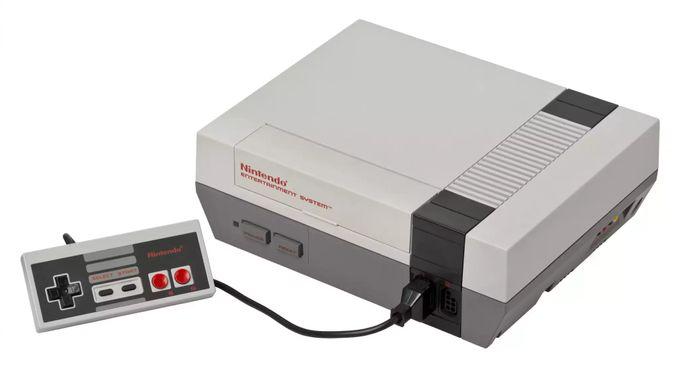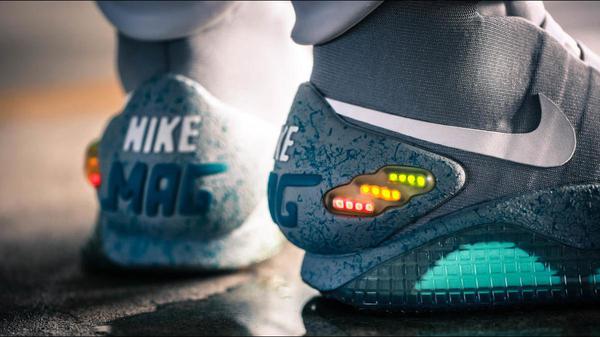
From the NES to the Switch, Nintendo has delighted generations of gaming enthusiasts with their consoles and handhelds.Ad
The most important things in brief
«Color TV Game» and the «Game & Watch » series are considered to be the forerunners of Nintendo's international career as a game console manufacturer. In both product lines, the games were built into the console. There was no way to purchase new games for the same console. With the Nintendo Entertainment System (NES), that should change.
Nintendo Entertainment System
The NES was the first game console to have "Nintendo" in its name. Until 1985 it was sold exclusively in Japan as Famicom - Family Computer. The new 8-bit processor structure shone especially in the graphics area, the NES could display up to 256 different colors.
The NES controller set a new standard for the entire industry. To this day, its button layout – direction input on the left, action buttons on the right – can be found on gamepads.
By the way, Nintendo also patented the control pad installed there. To this day, you won't find a simple cross as a D-Pad on either PlayStation or Xbox. They had to switch to four individual buttons or a circular button with a cross pattern.
Game Boy
The battery-powered Game Boy was released in 1989 and built on the successful Game & Watch on. Instead of having the various games permanently installed, there were cassettes for the portable 8-bit console. So, like the NES, you could play all sorts of games on the same console.
The numbers speak for themselves: 118 million units were sold. Also included is the Game Boy Color and other variations on the handheld phenomenon that are based on the same 8-bit technology. The most popular game is Tetris with 35 million units sold.
Super NES
In 1990, Nintendo ushered in the second generation of its home consoles with the "Super Nintendo Entertainment System" (SNES). Anything the NES could do, the SNES should do better.
The 16-bit technology enabled a wider range of colors and countless new possibilities in the field of music. The increased processor capacity was definitely noticeable. Polygonal 3D graphics became possible for the first time, as the title Star Fox showed. Two more action buttons and shoulder buttons were also added to the controller, which soon became industry standard.

Nintendo 64
With the next generation of consoles, Nintendo finally made the leap into the third dimension in 1996. This was made possible by the built-in 64-bit processor. Titles like Super Mario 64 and Legend of Zelda: Ocarina of Time revolutionized their respective genres and foreshadowed the future of video games.
Instead of CDs like the PlayStation from competitor Sony, cassettes were used again. This resulted in a cheaper console but increased the price of the individual games.
The Nintendo 64's unique controller made it possible to insert different cartridges. In addition to a rumble pack for haptic feedback, there was also a transfer pack. You could use Game Boy games there to load their data onto the console. A famous example was Pokémon - you could use it to battle your pocket monsters from the Game Boy versions on the TV screen.
Game Boy Advance
The Game Boy Advance (GBA) from 2001 was the first of Nintendo's consoles to feature backwards compatibility. Thus, not only games of the latest generation could be gambled, but also titles from the original Game Boy.
Subsequent new editions such as the GBA SP brought some technological advances with them. These include, for the first time, a rechargeable battery – instead of batteries – and backlighting for gaming in the dark.
Gamecube
The Nintendo Gamecube (GCN) followed in 2001 as the successor to the stationary Nintendo 64. Like Microsoft's Xbox and Sony's PlayStation 2, it had an optical drive to read DVDs. For increased copy protection, however, he used mini DVDs with a width of 80 millimeters. As a result, the Gamecube could not play conventional DVDs with films or audio files, which was reflected in the sales figures.
With the right accessory, you could connect your Gamecube to a Game Boy Advance. With certain titles it could therefore transfer data from GBA games or serve as a controller. It was also possible to play GBA games on the television with an adapter.
DS
The Nintendo DS was the next hit in the family of handhelds in 2004 and was backward compatible with GBA games. If you count the DS Lite, DSi and DSi XL, it sold around 154 million units. This puts it in second place among the world's best-selling consoles, ahead of only the PlayStation 2.
The uniqueness of the Nintendo DS was its dual screen, which expanded the traditional screen with a touchscreen. He played a crucial role in establishing the touchscreen in the mass market. Puzzle and action games in particular benefited from the new control option. In addition, several games used a built-in microphone for voice recording and noise detection.
Wii
The Nintendo Wii was released in 2006 and is considered another revolution in video game history. The Wii's unique controller used sensors to record its position and movement in space. For the first time, video games could be controlled with body movements instead of buttons and control pads. This boosted the popularity of the Wii, especially among people who hadn't really played video games before.
The Wii was backward compatible with the Gamecube and could also use its controller. For the first time, Internet connectivity also came to the fore with the WLAN connection. In addition to continuous updates, online multiplayer and an online shop have also been opened up.
3DS
In 2011, the Nintendo 3DS was introduced as the direct handheld successor to the DS. In addition to the already familiar touchscreen, the console offered 3D functionality. This was made possible by autostereoscopic technology, so no special glasses were needed.
In addition to an XL and a 2D version, an improved edition was also sold, the New Nintendo 3DS. This offered an improved processor and shortened long loading times that could occur with some titles.
Wii U
The Wii U was released in 2012 and uses the same controllers that came with the Wii. What is new, however, is that there is a tablet-like gamepad per console. New control combinations are possible with some games using the touchscreen.
As the first HD-capable Nintendo console, the WiiU should recapture the group of core gamers. With the predecessor, the Wii, the movement controls were more aimed at casual gamers. The Wii U was a commercial flop, selling almost 13.5 million units.
Switch
The Nintendo Switch is currently the latest console from Nintendo. Released in 2017, it is a unique mix of home console and portable handheld. This is made possible by the extraordinary hardware.
The actual console is an LCD tablet with a 6.2-inch touchscreen. Joy-Cons, the Switch's standard gamepads, can be used individually or in pairs. A Joy-Con can be attached to either side of the console to use the Switch as a handheld. Meanwhile, a docking station allows the games to be displayed on a television.
As a manufacturer of home consoles, Nintendo has often lagged behind the competition from Sony and Microsoft in terms of performance and graphics. But Nintendo's innovative technology and creative design has always met with unparalleled success. It is not for nothing that their most unusual systems are among the best-selling consoles of all.







